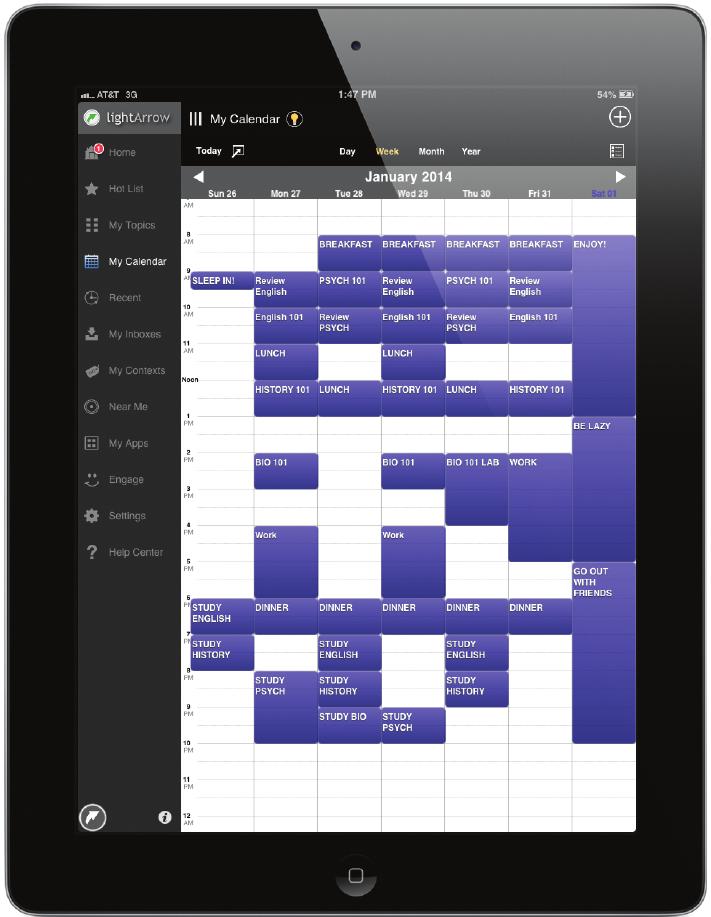Chart a Weekly Timetable
Now that you have created a term preview, the weekly timetable model in Figure 2.4 can help you tentatively plan how to spend your hours in a typical week. Here are some tips for creating a weekly schedule:
- As you create your schedule, try to reserve at least two hours of study time for each hour spent in class. This universally accepted “two-for-one” rule reflects faculty members’ expectations for how much work you should be doing to earn a good grade in their classes. So, if you take a typical full-time class load of fifteen credits, for example, you should plan to study an additional thirty hours per week. Think of this forty-five-hour-per-week commitment as comparable to a full-time job. If you are also working, reconsider how many hours per week it will be reasonable for you to be employed above and beyond this commitment or consider reducing your credit load.
- Depending on your biorhythms, obligations, and potential distractions, decide whether you study more effectively in the day, in the evening, or with a combination of both. Determine whether you are capable of getting up very early in the morning to study or how late you can stay up at night and still wake up for morning classes.
biorhythms The internal mechanisms that drive our daily patterns of physical, emotional, and mental activity.
- Not all assignments are equal. Work with tutors, other students, and instructors to estimate how much time you will need for each one and begin your work early. A good time manager frequently finishes assignments before actual due dates to allow for emergencies.
- Each term is different. As you progress through your college experience, the tasks and demands on your time will continue to change. From one term to the next, you will take different (and, typically, more demanding) classes. Throughout each class, you will be required to read a great deal of material, but the work may shift from tests and quizzes to research papers, presentations, and group projects. Be prepared for the additional time and project management these types of assignments involve.

YOUR TURN
Think about It
Make a list of the best and worst times for you to study. Why do you think you are more able to concentrate or be creative at certain times of the day or night?
Keep track of how much time it takes you to complete different kinds of tasks. For example, depending on your skills and interests, it might take longer to read a chapter in a biology text than to read one in a literature text. Keeping track of your time will help you estimate how much time to allocate for similar tasks in the future. How long does it really take you to solve a set of twenty math problems or write up a chemistry lab? Use your weekly timetable to track how you actually spend your time for an entire week.